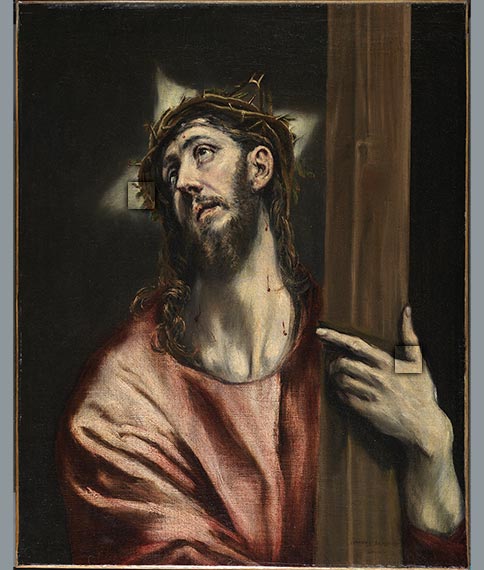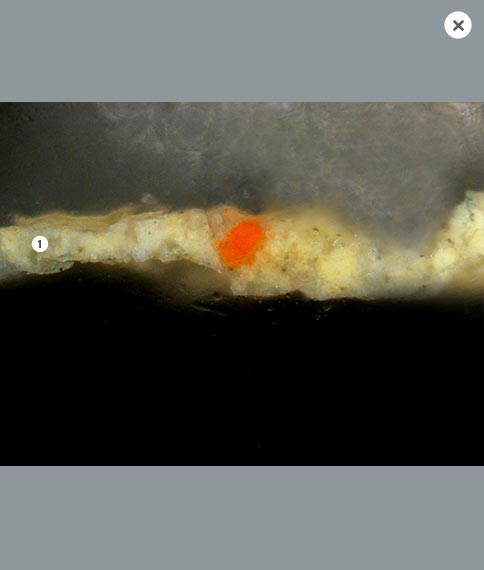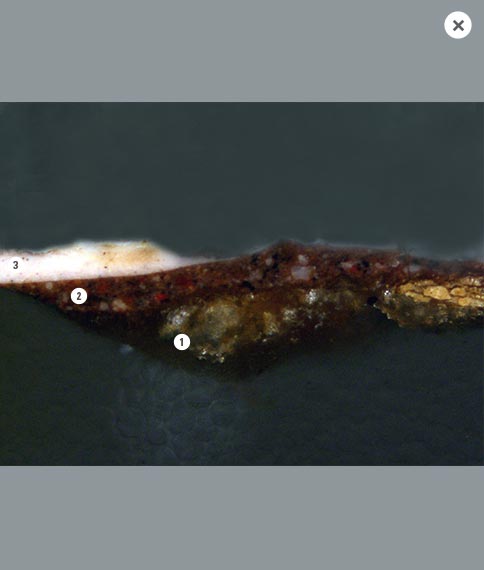MATERIALS ANALYSIS
Click on the specific area to see the details.
Yellow in Christ’s halo
This cross-section only penetrated as far as the top paint layer (1). The blend of pigments identified in this layer matches the treatment observed in other El Greco paintings that have been analysed, in which he achieves yellow and orange tones by mixing lead-tin yellow (type I in this case) with minium or, when he wanted to add a reddish tinge, carmine lake. The base of this paint layer is white lead, and a small amount of calcium carbonate has also been detected.
Flesh of the hand of Christ
The lowest layer is the ground of gesso and animal glue (1), followed by a reddish-brown primer (2) in which the red ochre and white lead pigments that form the base are enriched with umber and carbon black pigments and contain traces of residue from the palette (vermillion, carmine lake and azurite identified in this area). The darkening of the reddish primer in this section seems to be linked to the base tone applied where the artist later intended to paint the vertical beam of the cross, and to the dark brown background used throughout the work. In the paint layer corresponding to the flesh (3) we identified white lead mixed with a few granules of vermillion, lead-tin yellow and carmine lake. The primer was bound with linseed oil, yet analyses of the binder in the flesh area suggest that walnut oil was used there.



